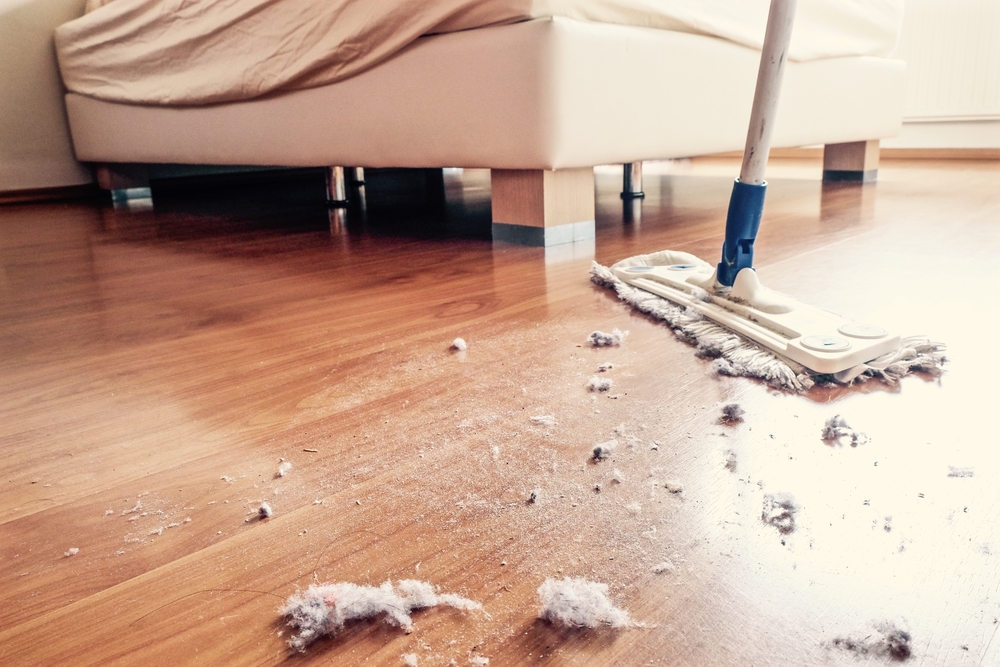
With the changes in weather accompanying every season – such as when spring arrives, filling ditches and streams with high water for a week or two – keeping our homes dry and healthy can be a challenge. Is yours prepared for a moist spring and damp summer, to say nothing about the impending visit from old man winter? Have you removed all the leftover cardboard boxes and accumulated junk from your basement?
When Winter is Coming (or Going), Moisture will Follow
When the snow piled against the house disappears and we begin to store snowblowers and shovels, our thoughts begin to drift off to scenes of summer sunshine and outdoor activities. Typically, a city’s stormwater management system – comprising of storm sewers, gutters, catch basins, and ditches – carries away the winter run-off with few floods or household calamities. However, after a more intense winter and warmer spring, heavy snow loads and shallow frost can place our homes in more peril. Larger volumes of water run-off and higher groundwater tables means more wet basements and busy sump pumps – a great example of such hardship occurring can be found in the tragic Ottawa and Quebec floods of recent springs where residents were forced to abandon their homes along the Ottawa River. The cleanup has been lengthy, but the affected communities have learned from the hardship on preventative steps they can take to save what they can.
In particular, most springtime floods occur when larger snowbanks against our foundations add to ground source moisture content, which builds vapour pressure against our foundation walls. The earth around our foundations that drains the slowest tends to draw moisture into our homes – mother nature tends to flow from high to low, moist to dry and warm to cold, so these conditions can sometimes be unpredictable much like our changing climate.
How Your Drainage System Works
Shallow winter frost typically affects the amount of moisture the earth can absorb before the snow melts and drains water away from our foundations. More moisture in the ground around our homes increases the water table under our footings and floor drains. City homes are connected to the local stormwater management system by a perforated drainage pipe – this is often known as a weeping tile or “big O.” It rests on the outside of the foundation wall, level with the underside of the footing under 8 inches of 75-percent clear gravel. Ground sources of moisture, rainfall from the roof and surface drainage water are meant to drain down the foundation wall, work through the gravel, enter the perforated 4-inch drainage or weeping tile, then migrate by gravity around your home to the city’s storm connection. Then, it enters the stormwater management system. That’s a lot of steps for keeping water out of your basement – no wonder some folks have such a hard time in making it happen!
Rural Households Don’t Have It Easy, Either
A typical rural home without connections to the city’s stormwater management system (SWMS) drains the “big O” to a hole cut into the basement floor, known as a sump pit. This sump pit services all the home’s required needs for lower-level drainage. Floor drains, condensation pumps, water softeners, air conditioning drains, and the entire weeping title are discharged into this pit. They are then electronically pumped to a buried pipe exhausting to the ditch at the end of the laneway. Let’s not begin to talk about heavy March and April snow melts when the power goes out for these folks.
Key Takeaways
In the end, what’s the primary observation from this information – the one thing to walk away with? Well, we can protect the durability and environment of our homes if we control our household moisture. Active water leaks or high relative humidity (exceeding 60 percent RH) in our environment can create conditions that foster poor air quality. Health Canada recommends that homes have a relative humidity between 35-45 percent RH. Dust mite populations increase in moist environments as well, especially in older carpeting on concrete basement floors. Microbiological organisms such as fungi and different strains of bacteria thrive in moist damp environments as well. In addition, moisture and cellulose (wood, cardboard boxes, paper goods) are the perfect combination for fungal activity – it doesn’t take long for these areas to become musty, smelly and unhealthy. Such conditions are more than simply unpleasant.
We can avoid these unhealthy situations if we isolate the moisture sources and remove opportunities for bacterial and fungal contamination.
Steps You Can Take to Make a Difference
Don’t Pile Snow Against the Side of Your Home
This can not only influence an uptick in moisture as previously noted but can also damage your foundation and siding, leaving elements of your home openly exposed to condensation and dampness that can spread.
Check Window Wells
Ensure that window wells are uncovered. They need to be free of leaves and organic materials, which can otherwise block drainage and introduce all sorts of moisture buildup-related problems.
Ensure a Smooth Spring Runoff
If spring is allegedly here, you need to accommodate for runoff to avoid oversaturating your property with ground-based moisture. Enable spring runoff to leave your property by chipping snow and ice away to improve drainage efficiency.
Servicing and Maintenance
Be sure to service and maintain your sump pit, especially if it hasn’t received any TLC in a while. In addition, be sure to inspect pump float levels and operation. Also, remove all debris and other drainage hoses from the pump float mechanism to ensure the best possible results.
Consider a Second Sump Pump
Double the efficiency of your moisture-fighting capabilities with a secondary sump pump – useful for if the primary one goes down or is in use already. Try attaching the second pump to an independent exhaust hose powered by a different fuse – this will ensure that both machines won’t fail at once if you run into trouble. Don’t forget to set the pump’s float adjustment to an inch higher than your primary pump as a failsafe backup unit.
Free-Flowing Eaves and Spouts
Consider installing free-flowing eavestroughs and downspouts with extensions that remove water away from the home and disperse it safely off the property. There is no point in dumping all of your water from the roof by the corner of the house if you have no grade drainage; it’ll simply seep down to your weeping tile and into either your sump pit or city drain. This will reintroduce unwanted moisture to your home environment and be more difficult to eliminate, so focus on drawing water away from your home by any means possible.
Don’t Encourage Dampness
Huge problems can arise when cardboard, paper, clothing, carpeting, hockey equipment, stuffed animals, pillows, and even wood are left on concrete floors near damp foundation walls. Aside from attempting to figure out what’s causing that dampness in the first place, your best bet is to get everything off the floor as it will otherwise spread the moisture damage over time.
Protecting Valuables
We all have items and mementos that we cherish, so don’t leave yours in a container on the floor to be destroyed come a water leak or surge in dampness. Store things in plastic containers with a good, sturdy lid off the floor whenever possible, especially if that floor contains excessive moisture!
Invest in Good Ventilation
A major pain point in city living is being surrounded by stagnant, heavy polluted air, during cooler, drier months. Take the time to invest in sufficient indoor/outdoor ventilation to help keep your environment in the best possible condition.
Grab a Digital Hygrometer
This is a handy little device that works to accurately monitor environmental conditions, including elements such as relative humidity, dewpoint and more. Use one to keep a close eye on how things are – doing so might give you the edge over any moisture slowly seeping into your home.
Dehumidification
Proper humidity control is essential to a happy, healthy home, but what if you have too much! Dehumidify damp basements during warmer, muggier months – remember to keep relative humidity levels between 35-45 percent RH. We highly recommend picking up a sufficiently large enough ENERGY STAR certified dehumidifier of at least 50 to 60 pints of load capacity.
Sealing and Caulking
If you allow moisture to penetrate even small cracks in wooden floorboards or between the stone in a foundation, it’s going to be difficult to recover from the damage it may cause. Instead, be prepared to seal and caulk any leaks in floors or foundation walls to avoid further penetration. Don’t hesitate to carry out repairs if needed, either!
Follow Your Nose
Toucan Sam was right – your nose is a powerful tool! If you detect an earthy or musty odour from a storage room or under a carpet, it’s important to not shrug it off as something unimportant and address it as soon as possible. After all, mold won’t move out on its own, so remove the source (moisture and what it’s feeding on), wash the affected area thoroughly, then keep things dry.
Indoor air quality conditions can be improved with proactive household maintenance, a can-do effort and the know-how needed to get things done properly. Anticipate moist conditions, inspect all pumps and drains, ensure ventilation and dehumidification, and store items off the floor at all times. Your healthy environment literally begins at home, so put a spring in your step and optimize indoor conditions for improved quality of life!
(Adapted from a prior version published in Healthwise Ottawa, spring 2008, and updated for fall 2019)






